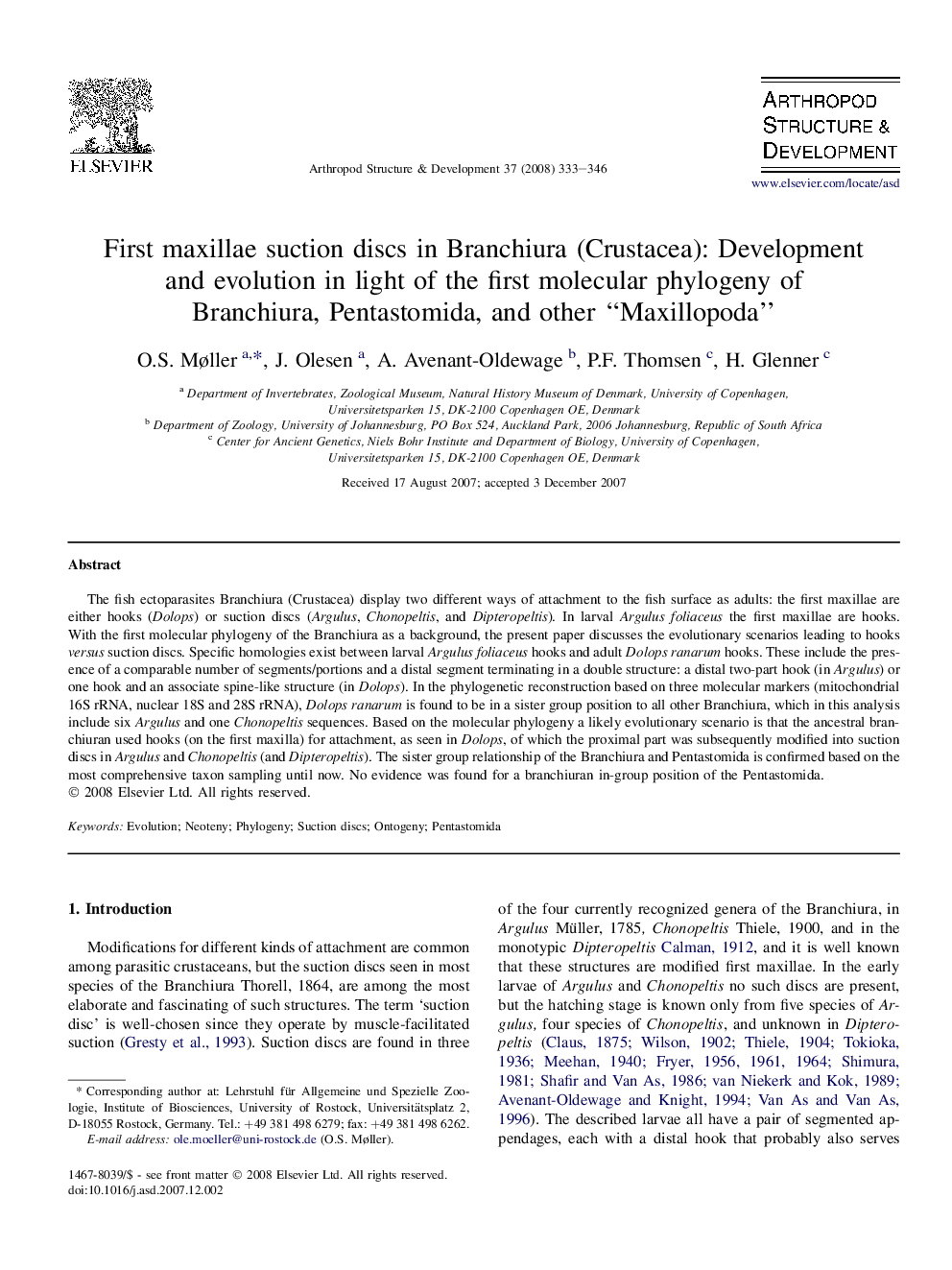| Article ID | Journal | Published Year | Pages | File Type |
|---|---|---|---|---|
| 2778942 | Arthropod Structure & Development | 2008 | 14 Pages |
The fish ectoparasites Branchiura (Crustacea) display two different ways of attachment to the fish surface as adults: the first maxillae are either hooks (Dolops) or suction discs (Argulus, Chonopeltis, and Dipteropeltis). In larval Argulus foliaceus the first maxillae are hooks. With the first molecular phylogeny of the Branchiura as a background, the present paper discusses the evolutionary scenarios leading to hooks versus suction discs. Specific homologies exist between larval Argulus foliaceus hooks and adult Dolops ranarum hooks. These include the presence of a comparable number of segments/portions and a distal segment terminating in a double structure: a distal two-part hook (in Argulus) or one hook and an associate spine-like structure (in Dolops). In the phylogenetic reconstruction based on three molecular markers (mitochondrial 16S rRNA, nuclear 18S and 28S rRNA), Dolops ranarum is found to be in a sister group position to all other Branchiura, which in this analysis include six Argulus and one Chonopeltis sequences. Based on the molecular phylogeny a likely evolutionary scenario is that the ancestral branchiuran used hooks (on the first maxilla) for attachment, as seen in Dolops, of which the proximal part was subsequently modified into suction discs in Argulus and Chonopeltis (and Dipteropeltis). The sister group relationship of the Branchiura and Pentastomida is confirmed based on the most comprehensive taxon sampling until now. No evidence was found for a branchiuran in-group position of the Pentastomida.
